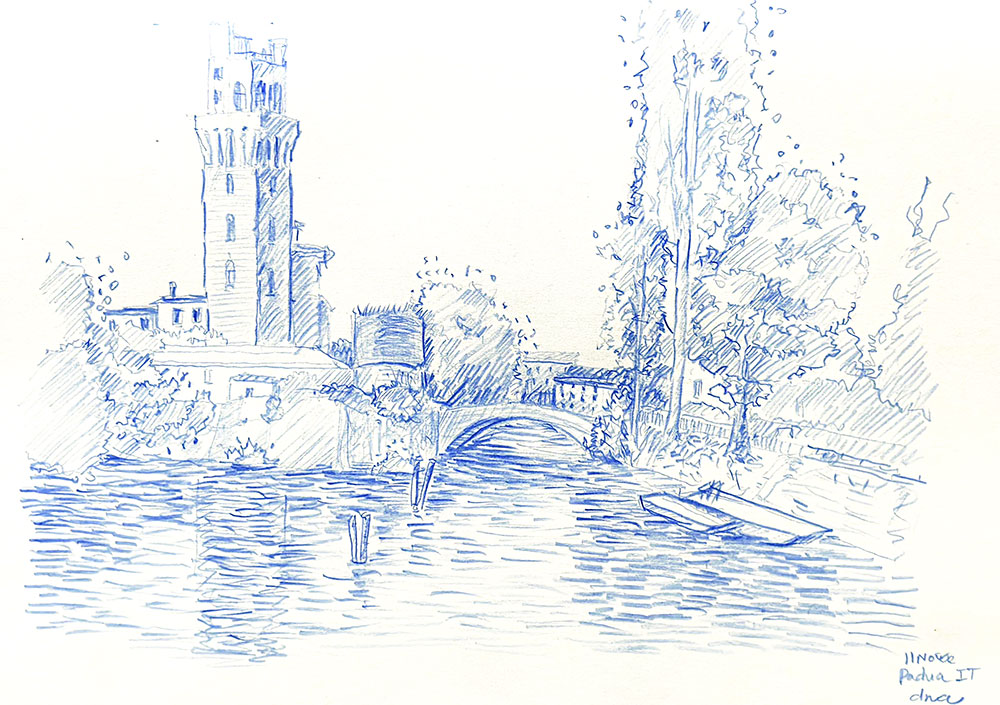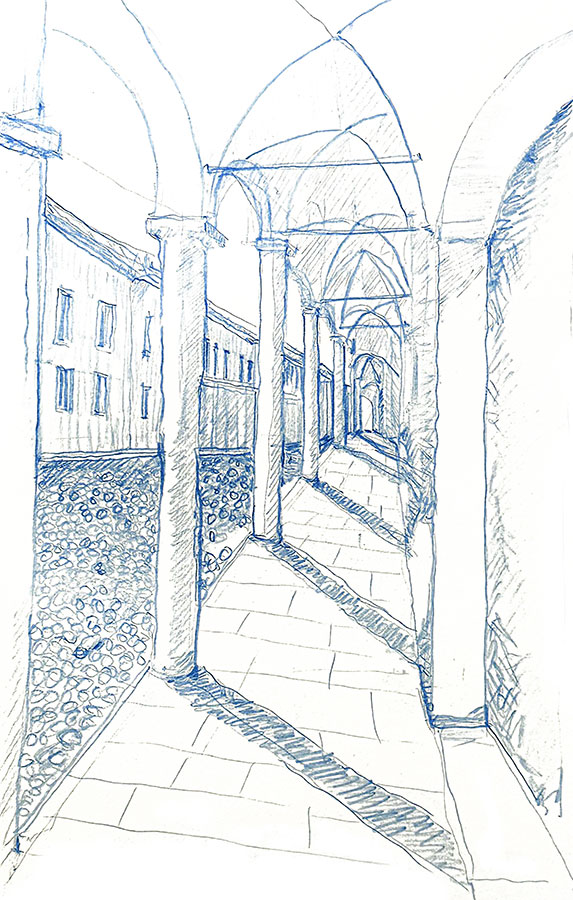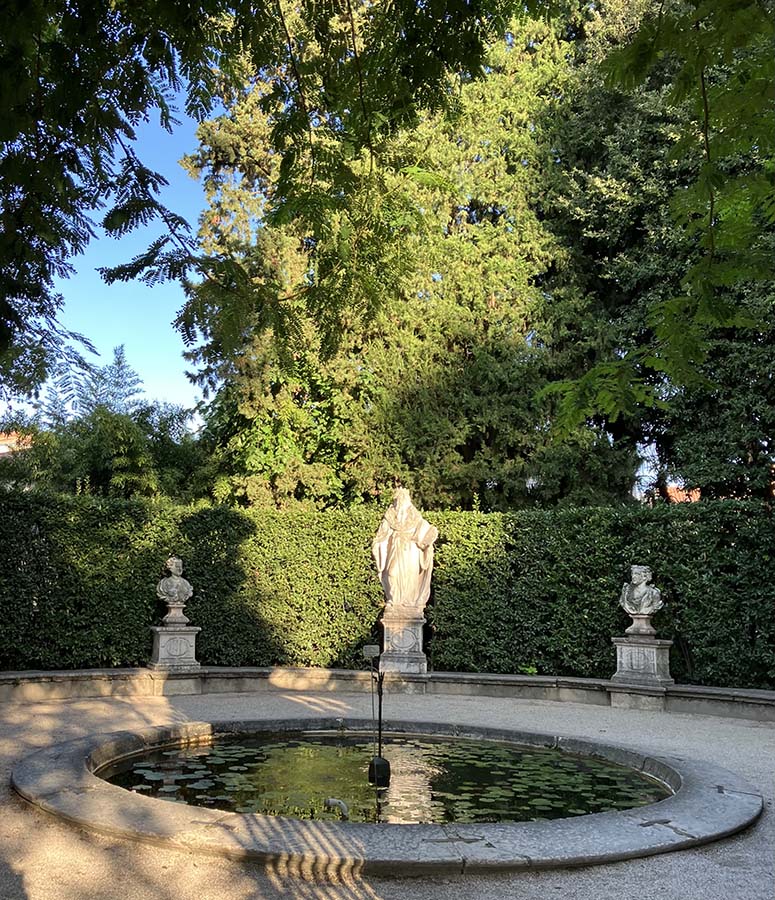River-Cities: Interdisciplinarity of Inland Waterways
Highlights from In Situ Graduate School
Padova City, Italy
18-23 September 2023
On 18 September 2023, 17 researchers from 13 regions were welcomed by hosts from the River Cities Network (RCN), the International Institute for Asian Studies (IIAS), and the University of Padova. The In Situ Graduate School (ISGS), Inland Waterways in the Anthropocene, convened with the objective to survey Padova canals through cultural, ecological, and socio-economic frames. The intensive six-day event centred on peer-to-peer learning within an engaged participatory research exchange. This article continues that dialogue by way of presenting researchers' insights from that interdisciplinary seminar.
The central focus of the ISGS was on rejuvenation schemes of the rivers and waterways. Researchers learned of Padova canal regeneration and management projects, which have gained recent attention and momentum. Of particular interest were conservation activities that supported long-term funding models for the preservation of ancient inland waterways. The ISGS local convenor Professor Alberto Barausse, who serves as acting coordinator of salt marsh protection and nature-based solutions, has been instrumental in activating local participation.

Fig. 2: Observatoire
astronomique de
Padoue from Ponte
Paleocapa.
Re-establishing a watery sense of place
One fundamental construct of the in situ graduate school was to critically reflect on the ways in which participatory engagement might re-establish a ‘watery sense of place’ in local communities. In the mornings, the programme was interspersed with panel discussions of field experts from a range of disciplines. Each lecture introduced a re-imagining of waterscape functions, conveyed ecological objectives in relation to the effects of climate change, and investigated historical and contemporary societal attitudes through literary works and fine art critique. Professor Francesco Vallerani – UNESCO Chair on Water, Heritage, and Sustainable Development at the University of Venice – opened with the idea of ‘waterscape’ and linked it to hydrography, in relation to “an aesthetic experience of the senses,” which he emphasised might be evoked through thoughtful observation. Professor Vallerani challenged researchers to think beyond watery iconographies depicted in historical photography. During a lecture on urban regeneration, Lisa Zecchin, a PhD student at the University of Padova and Ca’ Foscari University of Venice (Italy), presented on cultural heritage, the influences that canals represented for residents, and lost watery connections due to canal closures. Through a series of archival photographs, Zecchin showed the locations in Padova where remnants of the canal structure had been preserved. The afternoon sessions were dedicated to taking the lessons outdoors – sites viewed onscreen were inspected in person. Moving in small groups, researchers conducted fieldwork together.
Interdisciplinary groups were composed of fields including geography, architecture, ecology, art history, history, anthropology, economics, hydraulics, biology, engineering, and environmental science. The initiative, throughout the course of study, was for participant researchers to investigate two tracts of the Padova canals: Tronco Maestro and Piovego. Through close examination using strategic methodologies, researchers began to identify ways in which urban activities might aid and sustainably enhance the rivers and waterways. An exploration of the waterways began with on-site walking interviews, sketching, geographic information systems (GIS) mapping tools, and photography. As a mechanism of discovery, researchers from separate disciplines collaborated with creative methods, using drawings and photographs to investigate sustainability through socio-cultural, ecological, and economic frameworks. In preparation of a final presentation, each group created narratives to highlight their observations of the complex watercourse in a contemporary context.

Fig. 3: An arcaded
street in Padova.
Spatial connectivity: corridors in Padova
The opportunity to explore Padova provided a sense of visible interaction that exists between the city and its waterscape. The historical waterways which encircle Padova create paths that highlight green and blue corridors. However, a connection between these green-blue corridors – and their integration within Padova's urban elements – could be further developed. This divide is evident in the spatial layout around the waterways, where physical barriers or vacant areas often hinder direct engagement with the waterscape. Notably, Padova's city centre, located within the Veneto region, features pedestrian-friendly arcaded streets that link navigable urban paths together with expansive piazzas. The arcade streets, possibly termed grey corridors owing to their use of materials like stone or bricks since the Middle Ages, craft a concealed artificial space setting within the city's centre. This special urban design of grey corridors shields inhabitants from natural elements and connects seamlessly with open piazzas, forming city public spaces. This unique layout resembles an abstract urban river, serves as shared grey corridors, and sets an example for a 15-minute walkable city. How can the connectivity of such corridors contribute to the environmental sustainability target? This was one of the questions raised as research groups observed the inland waterways together.
The graduate school participants were organised into four small groups, based on prior GIS experience and disciplinary backgrounds, which included a balance of social and natural sciences, engineering, architecture, and urban design. The four groups conducted focused studies at specific locations and employed distinct research methods. Various dimensions were explored to strengthen the connections between grey-blue-green corridors, and viewed across social, economic, and cultural perspectives. Insights were drawn from discussions on nature-based solutions for revitalising urban waterfronts, as articulated in a lecture by Professor Laura Airoldi. The interplay between fluid and fixed spaces, the intrigue, and tension of water within cityscapes, was articulated by Professor Philip Hayward. Engaged discussion followed a lecture on Fluvial Geomorphology and River Management led by Professor Simone Bizzi. The immersive exploration of Padova's waterways compared the urban environment with aquatic landscapes, and uncovered challenges alongside opportunities.

Fig. 4: Padova Botanical Garden
(Orto botanico di Padova).
Discussions on waterways extended beyond Padova to the Venice Lagoon, involving a one-day field study to explore (by boat) the practical application of nature-based solutions for maintenance. Professor Barausse explained the changing ecosystem in the Venice Lagoon and discussed the nature-based solution project to protect the Lagoon. Professor Vallerani provided insights into waterscapes as cultural heritage, and he emphasised the present-day detachment between the activities of Padova's populace and its canal network.
The discussion of connectivity between artificially constructed and nature-centric spaces involved several approaches, such as placemaking, waterscapes, and urban configurations, each of which highlighted the impact on the accessibility and navigability of these spaces. Human behaviour within these contexts encompasses pedestrian activities such as cycling and swimming, and our observations of such practices significantly contributed to understanding local engagement. The primary objective centred on merging methodologies within each research group to examine the intricate interplay among urban settings, natural surroundings, architectural designs, heritage, and waterways.
Ex-situ summation
In 1545 the Botanical Garden (Orto Botanico) was created in Padova. Preserved in its original design, a thematic symbol of the world is positioned in a circular central plot. 1
architecture-1545 Many researchers individually visited the site to understand its layout, its history, and the connection between green space and the waterways. On the last day of the in situ graduate school, researchers left with a deepened connection to the rivers and canals. A greater understanding of its ecosystem was gained, as was an appreciation for conducting multi-method fieldwork as an interdisciplinary team.
Thea Mercer is a Master of Anthropology graduate from University College Cork (Ireland). She has conducted interdisciplinary ethnographic research in ancient landscapes in Mongolia, the Pacific Northwest, and Ireland. Email: thea@theaproxy.com
Dang Ngoc Anh is a PhD candidate at Université Paris Cité (France) and a lecturer at Hanoi Architecture University (Vietnam). His work focuses on environmental adaptation in architecture and urban design. Email: anhdn@hau.edu.vn